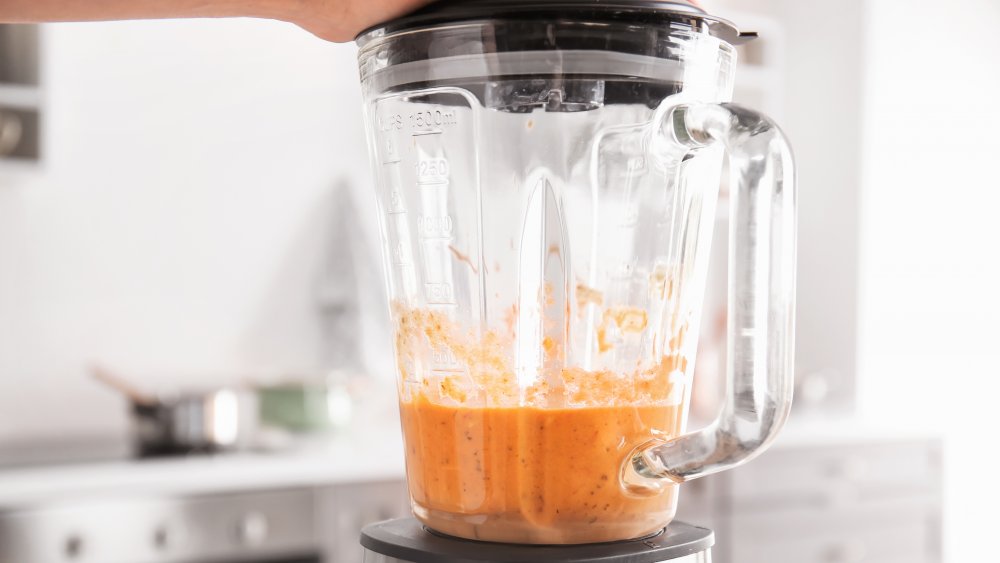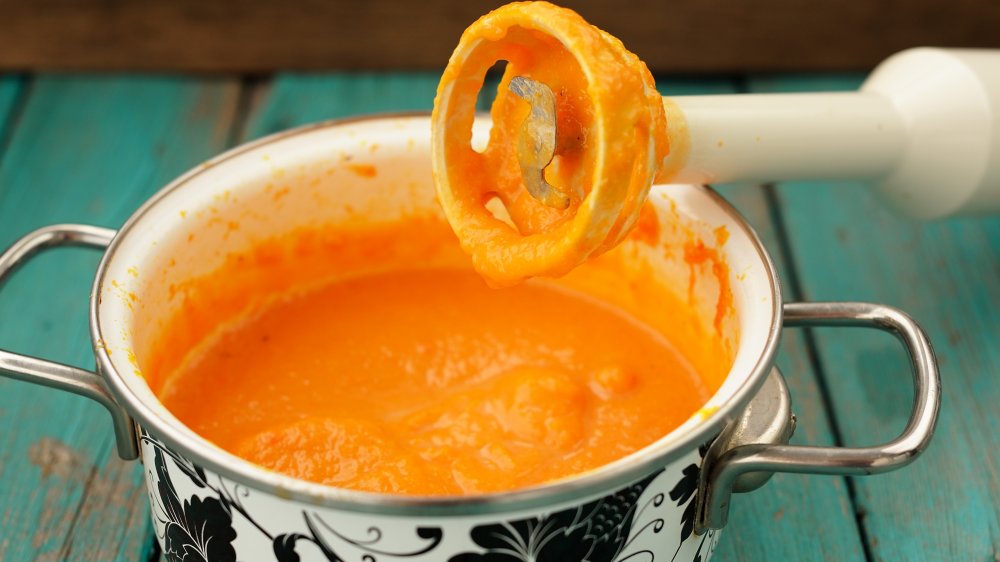You Should Never Put Hot Food In A Blender. Here's Why
We may receive a commission on purchases made from links.
Countertop appliances make so many annoying cooking tasks easier than ever. A quick internet search of kitchen tools and gadgets to make your life simpler will generate list upon list for you to peruse. The blender is one of those kitchen tools that really gives you your money's worth: grinding up nuts, pureeing foods, blending together your favorite fruits for a smoothie, or even crushing ice in a matter of seconds. According to ThoughtCo., the blender was invented in 1922 by Stephen Poplawski, and originally created to make soda fountain drinks. Fred Waring then picked up the torch and invested heavily in improving this small appliance which he hoped would "revolutionize American drinks." You could argue the Waring blender did just that, going on to become a household name.
Today, there are all kinds of electric blenders to choose from to help you accomplish your culinary desires quicker and better. From heavy duty commercial blenders, to the high end Vitamix, to the small and easy to use NutriBullet (via Amazon), there are blender options aplenty to meet the needs of any skilled chef or cooking newbie. Blenders are also a handy tool to use when whipping up a batch of your favorite gazpacho or other pureed soup, guaranteeing a smooth texture. But did you know you should never put hot foods in your blender?
Use an immersion blender instead for hot liquids and foods
If you are making a hot soup or creating the ultimate tomato sauce and find yourself needing to blend and puree your already cooking ingredients, you should not do so in your traditional blender. Per Compact Appliance, putting hot liquids in your blender can be a potential kitchen hazard, sometimes resulting in exploding lids, steam burns, and a huge mess all over your kitchen. Not to mention, frequently using hot liquids in your appliance can damage and wear down the blades.
While your standard blender is officially out for piping hot foods, there are still a couple of ways to achieve a smooth consistency using this type of appliance while staying safe. The first is to simply allow your food to cool down and then puree and blend it in small batches — after all, it's much easier to reheat something than it's to scrape it off your ceiling and cabinets. If you don't have time to wait on your food to cool, an immersion blender can be a great option if you have one, otherwise commenters on Stack Exchange suggest that most blender lids allow you to vent them by removing the center piece. If you choose to try this option, proceed with caution, blending in small batches on the slowest speed possible so you don't get a hot liquid splashed in your eye. If you are really worried about this, they suggest placing a kitchen towel over the opening.

